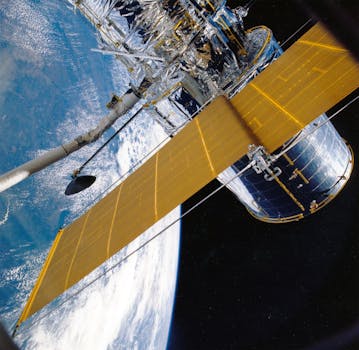The Future of Satellites: Revolutionizing Global Connectivity and Exploration

The Future of Satellites: Revolutionizing Global Connectivity and Exploration. The future of satellites holds tremendous potential for transforming global connectivity, exploration, and our understanding of the universe. With advancements in technology and increasing investments, the satellite industry is poised for significant growth and innovation. Satellites have been a crucial part of our daily lives, from providing navigation and communication services to facilitating scientific research and environmental monitoring. As we look to the future, it is essential to explore the emerging trends, challenges, and opportunities in the satellite industry.
One of the most significant trends in the satellite industry is the proliferation of small satellites, also known as CubeSats. These miniature satellites weigh less than 1.33 kilograms and are approximately the size of a shoebox. Despite their small size, CubeSats are equipped with advanced technology and can perform a wide range of tasks, from Earth observation to communication relay. The development of CubeSats has democratized access to space, enabling universities, startups, and other organizations to launch their own satellites and participate in space exploration.
Another area of innovation in the satellite industry is the development of satellite constellations. These constellations consist of hundreds or even thousands of satellites that work together to provide global coverage and connectivity. Companies like SpaceX, OneWeb, and Amazon are investing heavily in satellite constellations, with the goal of providing high-speed internet access to remote and underserved communities. Satellite constellations also have the potential to enable new applications, such as real-time video streaming, online gaming, and autonomous vehicle navigation.
Emerging Trends and Challenges
As the satellite industry continues to evolve, it faces several challenges and opportunities. One of the significant challenges is the increasing amount of space debris in Earth’s orbit. Space debris poses a significant risk to operational satellites and can cause costly damage or even complete loss of a satellite. To mitigate this risk, satellite operators and manufacturers are developing new technologies and strategies for debris removal and sustainable space operations.
Another challenge facing the satellite industry is the issue of spectrum management. As the number of satellites increases, there is a growing need for more spectrum allocation to support satellite communications. However, spectrum allocation is a complex and often contentious issue, involving regulatory bodies, satellite operators, and other stakeholders. To address this challenge, the satellite industry is exploring new spectrum management techniques, such as dynamic spectrum allocation and cognitive radio systems.
Opportunities for Innovation and Growth
Despite the challenges, the satellite industry offers tremendous opportunities for innovation and growth. One of the most significant areas of opportunity is the development of new satellite applications and services. With the increasing availability of satellite data and the advancement of analytics and artificial intelligence, there is a growing demand for satellite-based services, such as precision agriculture, environmental monitoring, and disaster response.
Another area of opportunity is the development of new satellite technologies, such as quantum communications and optical inter-satellite links. These technologies have the potential to enable new applications, such as secure communication networks and high-speed data transfer. Additionally, the satellite industry is exploring new materials and manufacturing techniques, such as 3D printing and advanced composites, to reduce the cost and increase the efficiency of satellite production.
Conclusion
In conclusion, the future of satellites holds tremendous potential for transforming global connectivity, exploration, and our understanding of the universe. With advancements in technology and increasing investments, the satellite industry is poised for significant growth and innovation. As we look to the future, it is essential to address the challenges facing the industry, such as space debris and spectrum management, while exploring new opportunities for innovation and growth.

